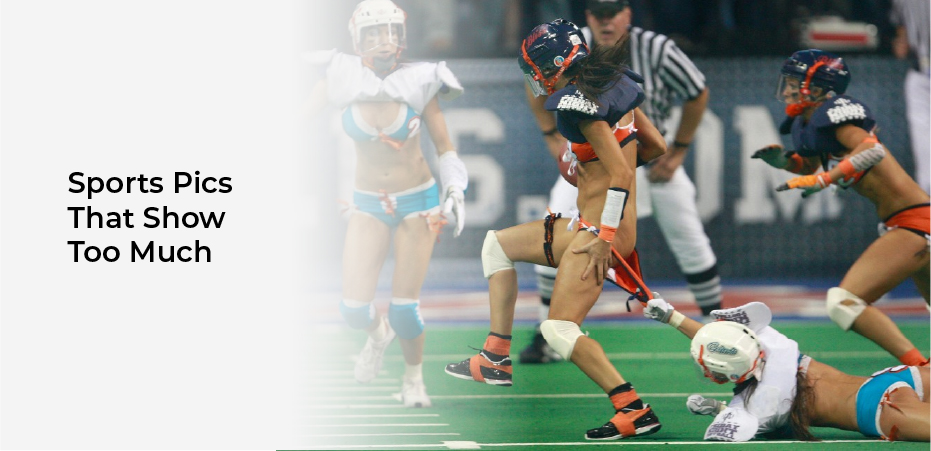You really got to know about sports pics that show too much! Sports photography plays a vital role in capturing memorable moments, showcasing athletes’ skills, and celebrating the spirit of competition. However, there are instances when sports pics cross the line, revealing more than what is necessary or appropriate. In this article, we will explore the impact of such photographs, the controversies they create, and the need for boundaries and respect in sports photography.
Introduction
Sports photography can inspire, captivate, and immortalize extraordinary moments in sports. From the triumphant victory shots to the action-packed frames, these images provide a glimpse into the intensity and emotions of athletic endeavors. However, there is a fine line between capturing the essence of the game and delving into invasive or compromising territory.
The Impact Of Sports Photography
Sports photography significantly influences public perception and promotion of the sport itself. Stunning visuals can attract fans, inspire young athletes, and generate excitement. At the same time, inappropriate or revealing sports pics can tarnish the reputation of athletes and the sports industry.
Sports Pics That Cross The Line
There is some useful information you need to follow:
1. Revealing Attire
One aspect that often leads to controversial sports photography is the attire worn by athletes. While many sports require specific uniforms or outfits, some outfits may unintentionally expose more than intended. These situations can result in the unintended objectification of athletes, detracting from their achievements and skills.
2. Inappropriate Poses
In some instances, athletes or photographers may choose poses that are provocative or overtly sexual. These poses can create discomfort among viewers and undermine the focus on the sport itself. It is important to differentiate between artistic expressions and actions that compromise the integrity of the athletes.
Controversial Sports Pics
1. Unintentional Exposures
Occasionally, sports photographs inadvertently capture moments of physical exposure due to the game’s fast-paced nature. These unintentional exposures, such as wardrobe malfunctions or unexpected angles, can lead to embarrassment and invasion of privacy for athletes. Ensuring respectful handling of such incidents is crucial to maintaining trust and preserving the individuals’ dignity.
2. Intentional Provocations
Unfortunately, some photographers or media outlets may intentionally seek controversial shots to generate attention or sensationalize a story. This deliberate intrusion into athletes’ privacy and personal lives is ethically problematic and can have lasting consequences for their careers and well-being.
The Role Of Media And Public Perception
The media plays a significant role in disseminating sports photographs and shaping public opinion. The choice of which images to publish and the narratives accompanying them influence how audiences perceive athletes and the sport itself. Responsible media coverage should prioritize the athlete’s achievements and skills, rather than focusing solely on sensationalism or exploitation.
The Need For Boundaries And Respect
Respecting athletes’ privacy and maintaining appropriate boundaries are crucial in sports photography. Athletes deserve to be seen as more than physical objects or sources of controversy. By exercising sensitivity and professionalism, photographers can ensure that their work contributes positively to the appreciation of sports.
Balancing Freedom Of Expression And Responsibility
While freedom of expression is important, it must be balanced with responsibility. Photographers should strive to capture compelling images that respect the dignity and privacy of athletes. This balance ensures that the power of sports photography is harnessed ethically and in a manner that benefits both the sport and the individuals involved.
Guidelines For Appropriate Sports Photography
Guidelines for appropriate sports photography should be established to navigate the fine line between capturing captivating moments and crossing boundaries. These guidelines can address aspects such as attire, poses, and the overall context of the image. By adhering to these principles, photographers can contribute to a positive and respectful representation of athletes.
The Importance Of Consent And Privacy
Respecting an athlete’s consent and privacy is paramount in sports photography. Athletes should have a say in how their images are used and distributed. Obtaining informed consent before publishing or sharing photographs can help prevent unintended negative consequences and uphold the rights of the individuals depicted.
Addressing The Issue As A Society
As a society, engaging in conversations about appropriate sports photography and its impact on athletes is crucial. This includes educating photographers, athletes, media professionals, and the public about the importance of respectful portrayal and responsible consumption of sports images.
Conclusion
Sports photography has the potential to captivate and inspire, but it also comes with responsibilities. Sports pics that show too much can harm athletes’ lives and the public perception of sports. By establishing guidelines, respecting privacy, and valuing consent, we can ensure that sports photography remains a celebration of athleticism while maintaining the dignity and integrity of the individuals involved.
FAQs
Q1: Can revealing sports pics affect an athlete’s career?
Yes, revealing sports pics can significantly impact an athlete’s career. They may face negative public perception, potential sponsorship losses, and personal distress.
Q2: Are there any regulations in place for sports photography?
While no universal regulations exist, many sports organizations and media outlets have guidelines to promote responsible and respectful sports photography.
Q3: How can athletes protect their privacy in the age of social media?
Athletes can set boundaries on their social media accounts, work with trusted photographers, and communicate their privacy concerns to media outlets.
Q4: What should media professionals consider when selecting sports photographs?
Media professionals should prioritize showcasing the athletes’ skills, achievements, and the spirit of the sport. They should avoid focusing solely on controversial or sensationalized images.
Q5: How can the public contribute to responsible sports photography?
The public can support responsible sports photography by consuming media that respects athletes’ dignity, raising awareness about the importance of privacy, and advocating for ethical practices in sports journalism.

